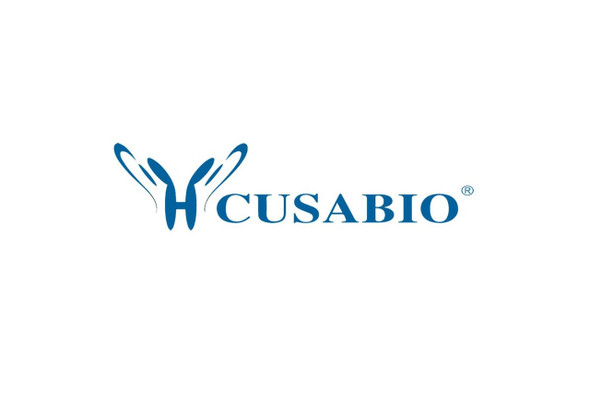Cusabio Human Recombinants
Recombinant Human COMM domain-containing protein 1 (COMMD1) | CSB-EP818712HU
- SKU:
- CSB-EP818712HU
- Availability:
- 13 - 23 Working Days
Description
Recombinant Human COMM domain-containing protein 1 (COMMD1) | CSB-EP818712HU | Cusabio
Alternative Name(s): Protein Murr1
Gene Names: COMMD1
Research Areas: Epigenetics and Nuclear Signaling
Organism: Homo sapiens (Human)
AA Sequence: AAGELEGGKPLSGLLNALAQDTFHGYPGITEELLRSQLYPEVPPEEFRPFLAKMRGILKSIASADMDFNQLEAFLTAQTKKQGGITSDQAAVISKFWKSHKTKIRESLMNQSRWNSGLRGLSWRVDGKSQSRHSAQIHTPVAIIELELGKYGQESEFLCLEFDEVKVNQILKTLSEVEESISTLISQPN
Source: E.coli
Tag Info: N-terminal GST-tagged
Expression Region: 1-190aa
Sequence Info: Full Length
MW: 48 kDa
Purity: Greater than 90% as determined by SDS-PAGE.
Relevance: Proposed scaffold protein that is implicated in diverse physiological processes and whose function may be in part linked to its ability to regulate ubiquitination of specific cellular proteins. Can modulate activity of cullin-RING E3 ubiquitin ligase (CRL) complexes by displacing CAND1; in vitro promotes CRL E3 activity and dissociates CAND1 from CUL1 and CUL2. Promotes ubiquitination of NF-kappa-B subunit RELA and its subsequent proteasomal degradation. Down-regulates NF-kappa-B activity. Involved in the regulation of membrane expression and ubiquitination of SLC12A2. Modulates Na+ transport in epithelial cells by regulation of apical cell surface expression of amiloride-sensitive sodium channel (ENaC) subunits and by promoting their ubiquitination presumably involving NEDD4L. Promotes the localization of SCNN1D to recycling endosomes. Promotes CFTR cell surface expression through regulation of its ubiquitination. Down-regulates SOD1 activity by interfering with its homodimerization. Plays a role in copper ion homeostasis. Involved in copper-dependent ATP7A trafficking between the trans-Golgi network and vesicles in the cell periphery; the function is proposed to depend on its association within the CCC complex and cooperation with the WASH complex on early endosomes . Can bind one copper ion per monomer. May function to facilitate biliary copper excretion within hepatocytes. Binds to phosphatidylinositol 4,5-bisphosphate (PtdIns(4,5)P2). Involved in the regulation of HIF1A-mediated transcription; competes with ARNT/Hif-1-beta for binding to HIF1A resulting in decreased DNA binding and impaired transcriptional activation by HIF-1.
Reference: "Analysis of the human homologue of the canine copper toxicosis gene MURR1 in Wilson disease patients." Stuehler B., Reichert J., Stremmel W., Schaefer M. J. Mol. Med. 82:629-634(2004)
Storage: The shelf life is related to many factors, storage state, buffer ingredients, storage temperature and the stability of the protein itself. Generally, the shelf life of liquid form is 6 months at -20?/-80?. The shelf life of lyophilized form is 12 months at -20?/-80?.
Notes: Repeated freezing and thawing is not recommended. Store working aliquots at 4? for up to one week.
Function: Proposed scaffold protein that is implicated in diverse physiological processes and whose function may be in part linked to its ability to regulate ubiquitination of specific cellular proteins. Can modulate activity of cullin-RING E3 ubiquitin ligase (CRL) complexes by displacing CAND1; in vitro promotes CRL E3 activity and dissociates CAND1 from CUL1 and CUL2
Involvement in disease:
Subcellular Location: Nucleus, Cytoplasm, Endosome membrane, Cytoplasmic vesicle, Early endosome, Recycling endosome
Protein Families:
Tissue Specificity: Ubiquitous. Highest expression in the liver, with lower expression in brain, lung, placenta, pancreas, small intestine, heart, skeletal muscle, kidney and placenta. Down-regulated in cancer tissues.
Paythway:
Form: Liquid or Lyophilized powder
Buffer: If the delivery form is liquid, the default storage buffer is Tris/PBS-based buffer, 5%-50% glycerol. If the delivery form is lyophilized powder, the buffer before lyophilization is Tris/PBS-based buffer, 6% Trehalose, pH 8.0.
Reconstitution: We recommend that this vial be briefly centrifuged prior to opening to bring the contents to the bottom. Please reconstitute protein in deionized sterile water to a concentration of 0.1-1.0 mg/mL.We recommend to add 5-50% of glycerol (final concentration) and aliquot for long-term storage at -20?/-80?. Our default final concentration of glycerol is 50%. Customers could use it as reference.
Uniprot ID: Q8N668
HGNC Database Link: HGNC
UniGene Database Link: UniGene
KEGG Database Link: KEGG
STRING Database Link: STRING
OMIM Database Link: OMIM









